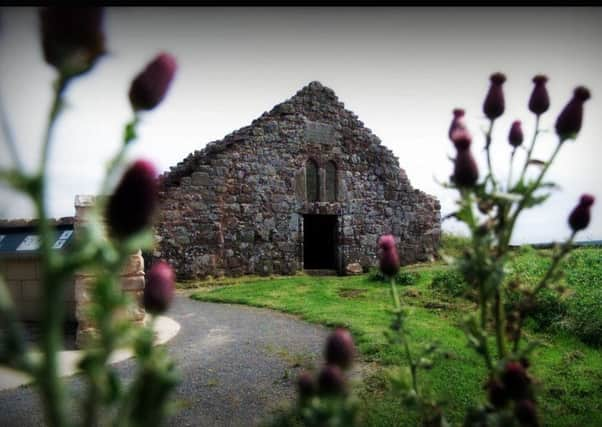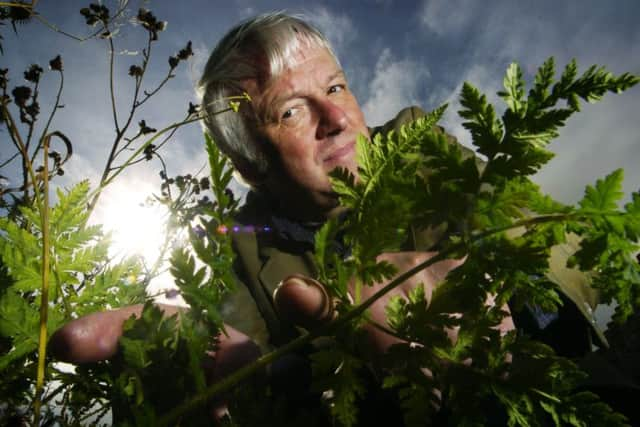Medical mysteries of Scotland's medieval hospital unearthed


Sitting around 17 miles south of Edinburgh, The Holy Trinity at Soutra, Midlothian, was once amongst the most important hospitals in the land and served as the main infirmary to serve the capital until 1460.
Built just off the Royal Road, the main route that connected Edinburgh with England, soldiers who fought in the Wars of Independence are also likely to have been treated here along with travellers and pilgrims.


Advertisement
Hide AdAdvertisement
Hide AdToday, only a family tomb remains on the rather desolate moor where the vast hospital once sat.
But, over the past three decades, the mysteries of medieval health care have been unearthed at the site with a fascinating series of discoveries made in the ground below the infirmary.
Archaeologist Dr Brian Moffat has dedicated the vast majority of his working life to the Soutra hospital.


His finds of seeds, plants, teeth, human bones and traces of disease have allowed experts to piece together how medicines and treatments were used there.
READ MORE:
Advertisement
Hide AdAdvertisement
Hide AdThe clay ground has been particularly effective at preserving waste from the hospital over hundreds of years with stone ditches, which served as the infirmary’s plumbing network, also holding clues to the medicines and treatments used.
Dr Moffat said: “I continue to be fascinated by what we find there. I can’t recollect many boring days at Soutra and thanks to the availability of records at the National Library of Scotland and the Royal Colleges, you have got a way of making sense of the medicine being used in medieval Scotland.”
He said many of plants at the site have come originally from across three continents with a number still growing there, including highly-toxic hemlock.
It was earlier discovered at the site along with the seeds of opium poppies and black henbane with the trio offering a remarkable insight into surgical practices at the hospital.
Advertisement
Hide AdAdvertisement
Hide AdDr Moffat added: “There is only once recipe where these three toxic plants are mixed together. It is administered before amputating limbs.”
Part of a human heel bone was found around two to three inches away from the plant remnants, the archaeologist added.
Evidence of stillborn babies and the drugs used to induce childbirth have also been found.
The plant Better Vetch - sometimes known at the Health Pea - was also used at Soutra. It is a powerful appetite suppressant during times of war and famine.
Advertisement
Hide AdAdvertisement
Hide AdRecent finds have included a tiny fragment of a clove and what Dr Moffat believes to be ground spices, with tests underway.
Dr Moffat believes such spices may have been used to contain diseases.
He added: “Herbal medicine tended to be exotic and expensive. And of course, if you spoke Latin, you could speak to anyone in Europe to have your supplies imported. Some of the plants have come from the Alps and the Middle East.”
Given the finds at the site, Dr Moffat has been able to map out the different areas of the infirmary which included famine management to amputation, childbirth, dentistry and psychiatric illness.
Advertisement
Hide AdAdvertisement
Hide AdHe said: “More than 200 teeth have been found at Soutra but very few of them have been forcibly removed. Teeth had come loose, probably due to disease. What we found nearby to the teeth was a plant very high in vitamin C which would be used to treat the gums. That was watercress.”
Dr Moffat said that more than 3,000 experts around the world had helped to collaborate on the Soutra Archaeoethnopharmacological Research Project which was set up following the first excavation there in 1986.
Dr Moffat estimated that up to 300 monks and servants lived on the site during the hospital’s heyday from the middle of the 12th Century to the mid 15th Century. It was shut down completely in 1640.
What remains visible at the site is a 17th-century burial vault, Soutra Aisle, with some suggestion this is part of the original hospital church.
Advertisement
Hide AdAdvertisement
Hide AdHe said: “If you are looking at the site in Edinburgh terms, the size of the hospital at Soutra was seven times the size of the area covered by the new Royal Infirmary and Western General combined. It is a hugely significant site.”
The site has been the life’s work of Dr Moffat, who last visited Soutra around two weeks ago.
“I really don’t see any reason to stop going there,” he added.
